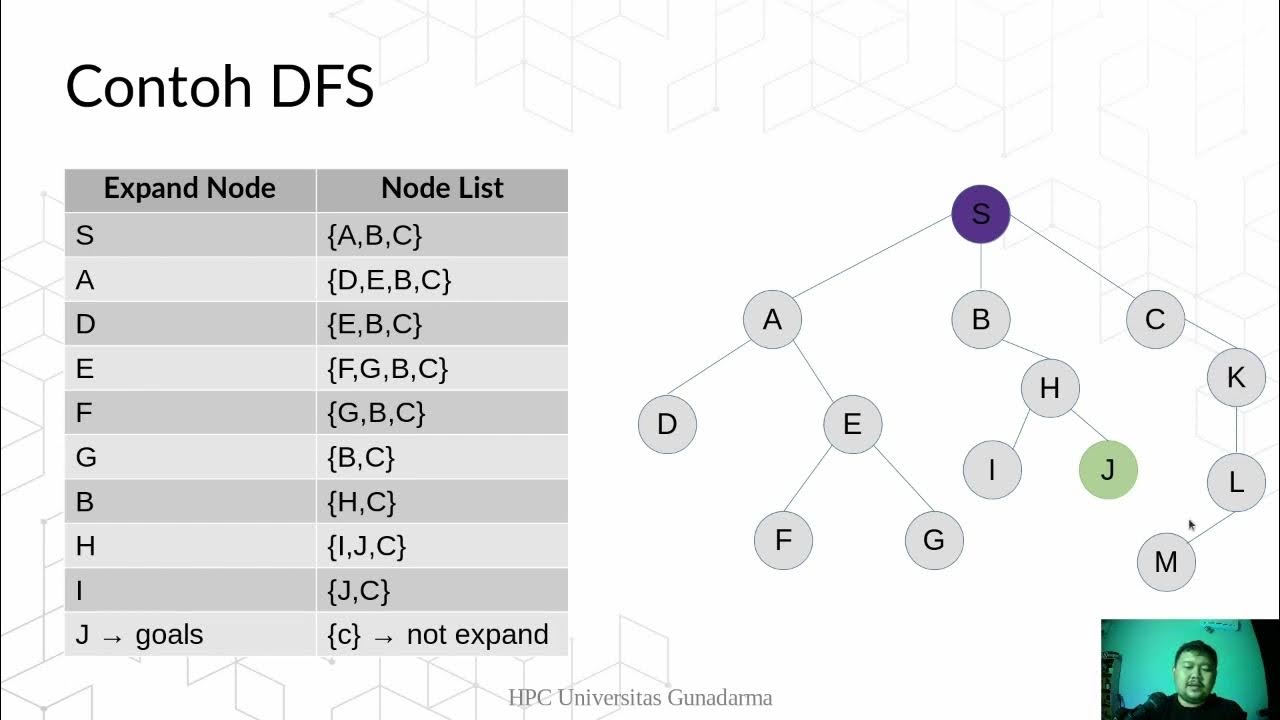Divide & Conquer Frontier Search.
Summary
TLDRThe video discusses the Divide and Conquer Frontier Search algorithm, focusing on its efficiency in managing memory usage during pathfinding tasks. By eliminating the need for a closed list, it maintains only the open list and introduces relay nodes to facilitate path reconstruction. The algorithm capitalizes on the monotonicity condition, ensuring that optimal paths are identified without revisiting nodes. While it reduces memory requirements, the trade-off involves increased computational cost due to the recursive nature of solving subproblems. This innovative approach effectively addresses challenges in search algorithms as computational demands grow.
Takeaways
- 😀 Reduced closed space requirements have been achieved in the design process.
- 💰 The new design incurs higher costs compared to the original setup.
- 🔍 The changes may not significantly alter daytime operational expenses.
- 📏 Depth 'D' is a crucial parameter in determining the efficiency of the design.
- 🛠️ The adjustments aim to enhance functionality while managing costs.
- 🌍 Space efficiency is a priority in the current design considerations.
- 📊 Balancing cost and space is essential for optimal operational performance.
- 🚀 Innovations in the design process have led to both challenges and opportunities.
- 🔄 Revisiting original cost assessments is necessary to understand financial implications.
- ⚖️ Strategic planning is required to navigate the trade-offs between cost and space.
Q & A
What is the main focus of the A* algorithm discussed in the video?
-The A* algorithm is focused on optimizing search problems by using heuristic methods to efficiently find the shortest path from a start node to a goal node.
How does the A* algorithm benefit from advancements in technology?
-The A* algorithm benefits from faster computers with larger memory capacities, allowing for more complex problem-solving and the ability to handle larger search spaces.
What challenges are associated with memory management in the A* algorithm?
-Challenges include the risk of thrashing, where excessive memory usage causes the algorithm to revisit paths unnecessarily, leading to inefficiencies in search performance.
What is the significance of the monotonic condition in the A* algorithm?
-The monotonic condition ensures that the heuristic function underestimates the cost of paths, which allows the algorithm to guarantee optimal path discovery without needing to revisit nodes.
What is the purpose of the Frontier Search algorithm introduced by Callen and Zang?
-The Frontier Search algorithm aims to eliminate the closed list in the A* algorithm while maintaining the ability to reconstruct the optimal path using relay nodes.
How does the Frontier Search algorithm prevent infinite loops?
-It prevents infinite loops by maintaining an open list that includes a taboo mechanism, which bars previously visited nodes from being regenerated.
What are relay nodes, and why are they important in the Frontier Search algorithm?
-Relay nodes serve as ancestors for open nodes, allowing the algorithm to reconstruct the path from the start node to the goal node without maintaining a full closed list.
What trade-offs does the Divide and Conquer Frontier Search algorithm present?
-While it reduces space requirements by eliminating the closed list, it incurs additional time costs due to the need for repeated searches, potentially increasing total time complexity.
How do variations like IDA* and recursive best-first search relate to the A* algorithm?
-These variations are designed to reduce memory usage in A*, but they introduce challenges such as thrashing and require careful management of search paths.
In what scenarios would optimizing search algorithms like A* be crucial?
-Optimizing search algorithms is crucial in applications involving large datasets, real-time processing, or environments where computational resources are limited, such as robotics and gaming.
Outlines

This section is available to paid users only. Please upgrade to access this part.
Upgrade NowMindmap

This section is available to paid users only. Please upgrade to access this part.
Upgrade NowKeywords

This section is available to paid users only. Please upgrade to access this part.
Upgrade NowHighlights

This section is available to paid users only. Please upgrade to access this part.
Upgrade NowTranscripts

This section is available to paid users only. Please upgrade to access this part.
Upgrade NowBrowse More Related Video

A* (A Star) Search Algorithm - Computerphile

Strategi Algoritma #7 : Decrease & Conquer

DFS -Depth First Seach

Beam Search Algorithm in Artificial Intelligence | All Imp Points | Heuristic Search Techniques

SOSP '23 | Efficient Memory Management for Large Language Model Serving with PagedAttention

AQA A’Level Merge sort
5.0 / 5 (0 votes)